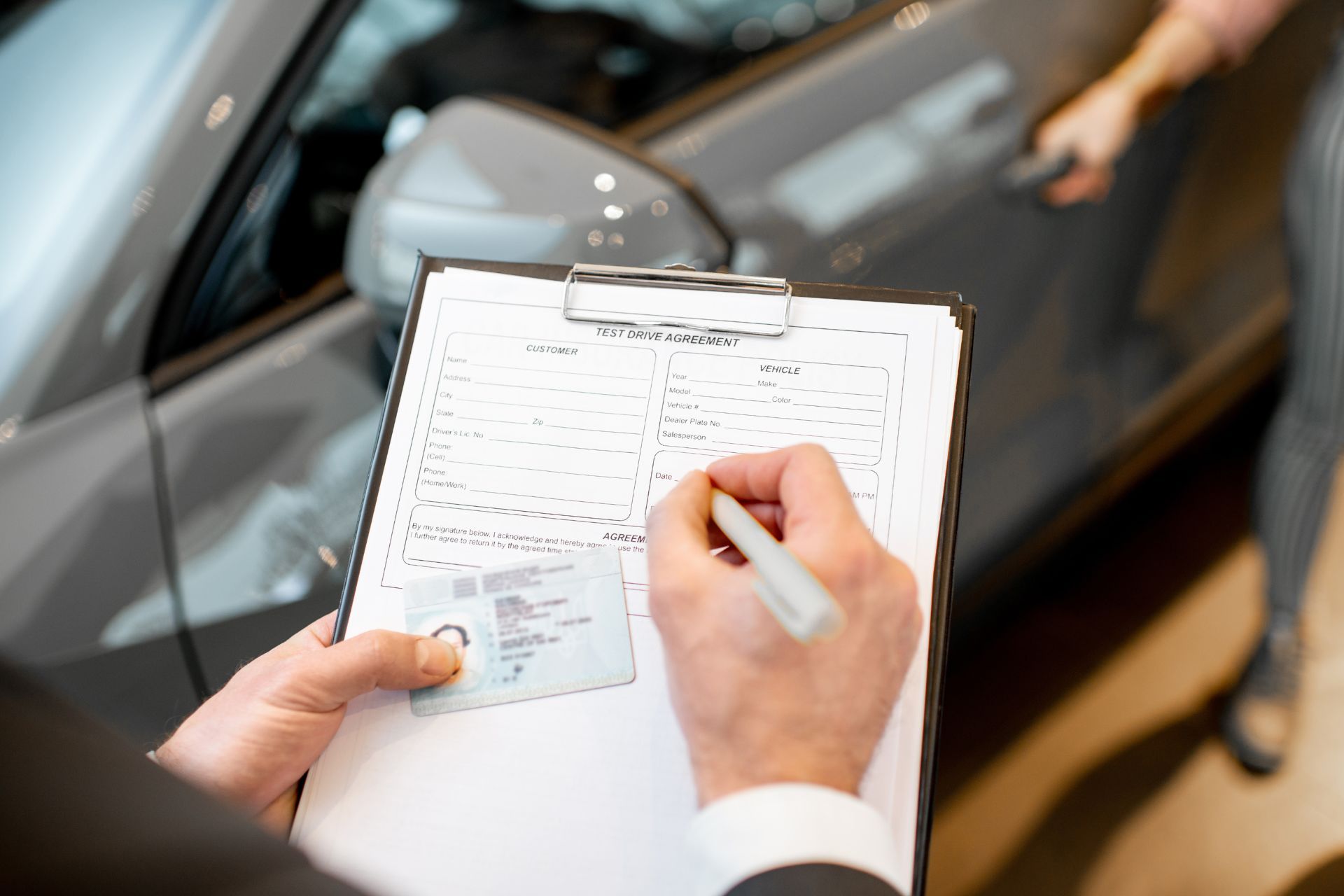SR44 Insurance - Do You Mean SR22 Insurance? Here's What You Need to Know
29 September 2025
See How We're Different
or call us: (727) 620-0620

When it comes to auto insurance and legal requirements following serious driving infractions, terms like SR-22 and FR-44 often come up—and sometimes get confused. If you’ve heard of SR44 insurance, you might be mixing up these two certificates of financial responsibility. Understanding the difference between SR-22 and FR-44 is crucial, especially if you’re navigating requirements after a DUI or other serious violation.
This guide will clarify what SR-22 and FR-44 insurance certificates are, how they differ, and what you need to know if you’re required to carry one. Along the way, you’ll find important details about coverage limits, costs, and state-specific rules to help you make sense of these often misunderstood terms.
For a detailed look at SR-22 insurance requirements, Forbes Advisor offers a comprehensive overview that can supplement what you learn here.
What Is SR-22 Insurance?
SR-22 is not actually an insurance policy but a certificate of financial responsibility filed by your insurance company with the state’s Department of Motor Vehicles (DMV). It serves as proof that you have at least the minimum required car liability insurance mandated by your state. This filing is often required for drivers who have committed serious traffic violations such as DUIs, reckless driving, or driving without insurance.
The SR-22 certificate essentially acts as a guarantee that the driver maintains the necessary coverage for a specified period, usually three years. If the insurance lapses or is canceled, the insurance company must notify the DMV, which can lead to license suspension or other penalties.
It’s important to note that the SR-22 requirement can significantly impact your insurance costs. For example, drivers with a DUI conviction can expect average annual insurance costs around $3,295, with an additional SR-22 filing fee that typically runs about $25, though this varies by state and insurer. This makes maintaining the SR-22 not only a legal obligation but also a financial consideration for many drivers.
Moreover, the process of obtaining an SR-22 can be daunting for those unfamiliar with it. After a serious violation, drivers must first find an insurance provider willing to issue an SR-22. Not all insurers offer this service, and those that do may charge higher premiums due to the increased risk associated with insuring someone with a history of serious infractions. Additionally, the SR-22 must be renewed periodically, and any lapse in coverage can trigger a new filing requirement, which can complicate the situation further.
Understanding the implications of an SR-22 is crucial for affected drivers. Not only does it affect insurance rates, but it can also impact employment opportunities, especially for jobs that require driving. Employers may conduct background checks that reveal a driver’s SR-22 status, potentially influencing their hiring decisions. Therefore, it’s essential for drivers to stay informed about their obligations and seek advice from insurance professionals to navigate this challenging landscape effectively.
Understanding FR-44 Insurance: How It Differs from SR-22
While SR-22 is a certificate required in many states, FR-44 is a similar but distinct certificate of financial responsibility that applies specifically in Florida and Virginia. The key difference lies in the coverage limits mandated by FR-44, which are higher than those for SR-22.
According to U.S. News, "An FR-44 is similar to an SR-22 but requires higher liability coverage limits and is specific to Florida and Virginia." This means that if you’re required to carry an FR-44, you will need to purchase insurance with more substantial coverage than what an SR-22 demands.
The higher liability limits under an FR-44 are designed to provide greater financial protection due to the serious nature of violations that trigger this requirement, such as DUI convictions. This makes FR-44 insurance more expensive but also more comprehensive in coverage.
In addition to the increased coverage limits, obtaining an FR-44 can also have implications on your driving record and insurance premiums. The process of securing an FR-44 typically involves demonstrating that you have the necessary insurance in place, which can be a hurdle for those who have had previous violations. Insurers may view applicants with an FR-44 as higher risk, leading to increased premiums. It's essential for individuals to shop around and compare quotes from different insurance providers to find the best rates available under the FR-44 requirement.
Moreover, the duration for which an FR-44 must be maintained can vary, often requiring proof of coverage for a minimum of three years. During this time, any lapse in coverage can lead to severe penalties, including the potential suspension of your driving privileges. This makes it crucial for drivers to stay informed about their insurance status and ensure that they remain compliant with the FR-44 requirements throughout the mandated period. Understanding these nuances can help individuals navigate the complexities of auto insurance after a serious violation, allowing them to regain their driving privileges more effectively.
Coverage Requirements: SR-22 vs. FR-44
One of the most critical differences between SR-22 and FR-44 lies in the minimum liability coverage limits required by each certificate. These limits dictate how much your insurance must cover in the event of bodily injury or property damage.
For SR-22, the insurance must meet the state’s minimum liability requirements, which vary by state but are generally lower than those for FR-44. In contrast, FR-44 mandates significantly higher coverage limits. For example, in Florida, FR-44 requires liability limits of at least $100,000 per person and $300,000 per accident for bodily injury, along with $50,000 for property damage. These limits are double the state’s minimum standard insurance requirements.
Similarly, in Virginia, FR-44 coverage must include at least $50,000 per person, $100,000 per accident for bodily injury, and $40,000 for property damage. These amounts exceed the typical SR-22 requirements, reflecting the heightened risk associated with drivers who must carry an FR-44.
InsuranceProviders.com highlights that these elevated limits under FR-44 are designed to ensure that drivers convicted of serious infractions maintain sufficient financial responsibility, which helps protect other road users and the state from uninsured losses.
Moreover, the implications of these coverage requirements extend beyond mere compliance with state laws. For individuals who have had their licenses suspended due to serious offenses such as DUI or reckless driving, obtaining an FR-44 can serve as a critical step toward regaining their driving privileges. The higher coverage limits not only reflect the seriousness of the infractions but also encourage drivers to adopt safer driving habits, knowing they are financially accountable for their actions on the road.
Additionally, the process of obtaining an SR-22 or FR-44 can vary significantly, with FR-44 often requiring a more thorough review of a driver's history and financial situation. Insurers may assess the risk more stringently, leading to higher premiums. This can be a deterrent for some drivers, but it also emphasizes the importance of maintaining a clean driving record. As such, understanding the nuances of these requirements is essential for those looking to navigate the complexities of auto insurance after a serious driving violation.
Who Needs SR-22 or FR-44 Insurance?
Both SR-22 and FR-44 certificates are generally required for drivers who have committed serious traffic offenses, but the specific circumstances and states differ.
SR-22 is commonly required nationwide for drivers who have been convicted of offenses such as DUI, reckless driving, or driving without insurance. It acts as a way for states to monitor high-risk drivers and ensure they maintain proper insurance coverage. The SR-22 form is not an insurance policy itself but rather a document that your insurance company files with the state to confirm that you have the minimum required liability coverage. This requirement can last for a specified period, often three years, during which the driver must maintain continuous coverage to avoid license suspension.
FR-44, on the other hand, is specific to Florida and Virginia and is typically mandated for drivers convicted of more severe offenses, including DUI. The requirement for FR-44 reflects the states’ policies to impose stricter financial responsibility on drivers deemed higher risk due to their violations. Unlike SR-22, the FR-44 mandates higher liability limits, which can be as much as $100,000 for bodily injury per person, $300,000 for total bodily injury, and $50,000 for property damage. This increased coverage is designed to protect the public from the potential risks posed by drivers with a history of serious infractions.
Bankrate explains that an FR-44 certificate is essentially a step up from an SR-22 in terms of both the required coverage and the seriousness of the infractions that trigger it. Therefore, if you live in Florida or Virginia and have been convicted of a DUI or similar offense, you are likely to be required to carry an FR-44 rather than an SR-22. The implications of these requirements extend beyond just the financial aspect; they can significantly impact a driver’s ability to secure affordable insurance in the future. Many insurance companies view SR-22 and FR-44 filings as red flags, which can lead to higher premiums or even difficulty in obtaining coverage altogether.
Additionally, the process of obtaining an SR-22 or FR-44 can vary depending on the state and the insurance provider. Drivers may need to shop around to find an insurer willing to file the necessary paperwork, and they should be prepared for the possibility of increased rates due to their high-risk status. It's also crucial for drivers to understand the timeline associated with these filings, as failing to maintain the required coverage or allowing the policy to lapse can result in further penalties, including extended periods of required filings or additional fines. Therefore, staying informed and compliant with state regulations is essential for anyone navigating the complexities of SR-22 and FR-44 insurance requirements.
Costs and Financial Impact of SR-22 and FR-44 Insurance
One of the most significant concerns for drivers required to carry SR-22 or FR-44 insurance is the financial impact. Both certificates typically lead to increased insurance premiums due to the higher risk profile of the driver.
For SR-22, the average annual insurance cost for someone with a DUI conviction is about $3,295, with an additional filing fee for the SR-22 certificate that is usually around $25. However, these fees can vary depending on the state and insurance provider. In some cases, drivers may also face additional costs related to reinstatement fees for their licenses, which can further add to the financial burden. Understanding these potential expenses is crucial for anyone navigating the aftermath of a DUI conviction.
FR-44 insurance tends to be more expensive than SR-22 because it requires higher liability coverage limits. The increased coverage means higher premiums, reflecting the greater risk the insurer is assuming. This is especially relevant in Florida and Virginia, where the FR-44 requirements double or nearly double the minimum coverage limits. In addition to the higher premiums, drivers may also encounter stricter eligibility criteria and additional paperwork, which can complicate the process of obtaining insurance.
It’s important for drivers to shop around and compare insurance providers to find the best rates for SR-22 or FR-44 insurance. Some insurers specialize in high-risk policies and may offer more competitive rates or payment plans to help manage costs. Additionally, drivers should be aware of potential discounts that may apply, such as safe driver discounts or multi-policy discounts if they bundle their auto insurance with other types of coverage. Taking the time to thoroughly research and understand the options available can lead to significant savings over time.
Moreover, the duration for which a driver is required to maintain SR-22 or FR-44 insurance can also affect overall costs. Typically, SR-22 is mandated for three years, while FR-44 may require compliance for a longer period, depending on the nature of the offense. This long-term financial commitment can weigh heavily on a driver’s budget, making it essential to plan ahead and consider the full scope of expenses associated with maintaining these types of insurance. Additionally, the impact of having SR-22 or FR-44 insurance on a driver's credit score should not be overlooked, as higher premiums can lead to increased debt levels, potentially affecting future financial opportunities.
How to Obtain and Maintain SR-22 or FR-44 Insurance
Obtaining an SR-22 or FR-44 certificate involves working with your insurance company. Not all insurers offer these filings, so it’s essential to confirm that your provider can file the necessary certificate with your state’s DMV.
Once you are required to carry an SR-22 or FR-44, your insurance company will file the certificate on your behalf. You must maintain continuous coverage for the duration specified by your state, often three years. If your insurance lapses or is canceled, the insurer is obligated to notify the DMV, which can lead to license suspension or other penalties.
Maintaining continuous coverage is crucial. Drivers should be proactive in renewing policies and making payments on time to avoid gaps that could jeopardize their driving privileges. Additionally, some states may require you to provide proof of the SR-22 or FR-44 filing to reinstate your license after suspension.
Key Takeaways: What You Need to Remember
Understanding the difference between SR-22 and FR-44 insurance is essential, especially if you’ve been involved in serious driving violations. Here are the key points to keep in mind:
- SR-22 is a certificate proving you have the state’s minimum required liability insurance and is commonly required after serious infractions nationwide.
- FR-44 is similar but requires higher liability coverage limits and applies specifically to Florida and Virginia for serious offenses like DUI.
- FR-44 coverage limits are significantly higher, often double the state minimums, reflecting the severity of infractions it covers.
- Both SR-22 and FR-44 can lead to substantially higher insurance premiums, with average DUI-related SR-22 insurance costs around $3,295 annually.
- Maintaining continuous coverage and working with an insurer that files these certificates is critical to avoid license suspension or other penalties.
Final Thoughts
If you’ve come across the term SR44 insurance, it’s likely a mix-up between SR-22 and FR-44 certificates. Knowing the distinction and what each entails can save you time, money, and legal headaches. Whether you need an SR-22 or FR-44, the most important step is to ensure you meet your state’s requirements and maintain the proper insurance coverage to keep your driving privileges intact.
By understanding these certificates and their implications, you can navigate the aftermath of serious driving offenses more confidently and work toward regaining full driving rights. Remember to consult with your insurance provider and local DMV to confirm the exact requirements for your situation.





